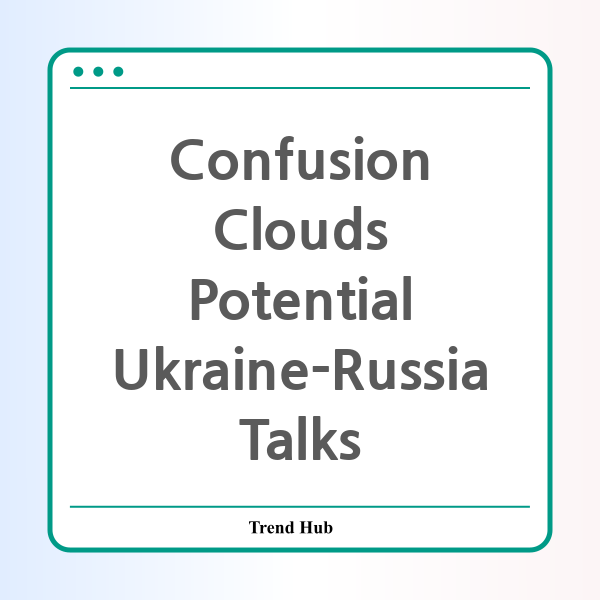* This website participates in the Amazon Affiliate Program and earns from qualifying purchases.

In a world where geopolitical tensions reach unprecedented heights, the discussions between Ukraine and Russia represent a beacon of hope for peaceful resolution. However, as recent developments unfold, confusion and uncertainty surround the prospects of a face-to-face meeting that could pivot the course of this ongoing conflict.
On May 15, 2025, anticipation was high for potential talks in Istanbul, Turkey, which were called by Russian President Vladimir Putin. However, he would not be attending, raising questions about the seriousness of the negotiations. Ukrainian President Volodymyr Zelensky, committed to a ceasefire, stated he would only meet with Putin, who was notably absent from the list of Russian officials expected to attend.
The backdrop to these talks is significant. Since Russia launched its full-scale invasion of Ukraine in February 2022, direct engagement between the two nations has been nearly nonexistent. This gap in dialogue has only exacerbated the humanitarian crisis and deepened animosities. The stakes are incredibly high, particularly with the looming threat of additional sanctions from Ukraine's allies if Russia refuses to engage in meaningful talks.
As Kyiv and Moscow's delegations prepared to meet, questions regarding crucial details emerged. The Russian state news agency had initially reported that talks would begin at 10 a.m. local time. However, this was quickly labeled as "fake news" by Ukrainian officials, leaving both sides and the attending media in a swirl of uncertainty.
Despite the confusion, an array of diplomats and reporters gathered outside the Dolmabahce Palace, hoping for a breakthrough. The presence of officials from the United States, including former President Trump’s special envoy to Ukraine, indicated that international interests were keenly focused on the outcome of these discussions.
While both Ukraine and Russia prepared for potential talks, the stark reality remained: core issues were unresolved. Ukraine has made it clear that any discussions must center around an unconditional ceasefire, while Russia’s motives appear to encompass addressing their grievances regarding Ukraine's sovereignty and NATO's eastward expansion.
During previous encounters, Russia proposed terms that would have stripped Ukraine of its sovereignty, reflecting a stark contrast in the objectives of the two nations. The atrocities uncovered by Ukrainian forces in previously occupied territories have only solidified Ukraine's resolve against any compromise that jeopardizes its independence.
As the day unfolded with no clarity in sight, the international community remained watchful. The potential for dialogue exists, but only if both sides can navigate the murky waters of mutual distrust and entrenched positions. With global implications at stake, the need for a ceasefire has never been more pressing, yet the paths leading to peace are fraught with complexity.
While the negotiations in Istanbul are essential, the absence of key leadership figures and the lack of a definitive agenda cloud their potential for success. If there is any hope for a breakthrough, both parties must come prepared to not only discuss their differences but to listen and seek common ground.
In conclusion, the confusion surrounding the Ukraine-Russia talks highlights the challenges inherent in peacemaking in a complex geopolitical landscape. As we await further developments, the situation underscores the need for persistent advocacy for peace and resolution, even amidst the fog of uncertainty and conflict.
* This website participates in the Amazon Affiliate Program and earns from qualifying purchases.